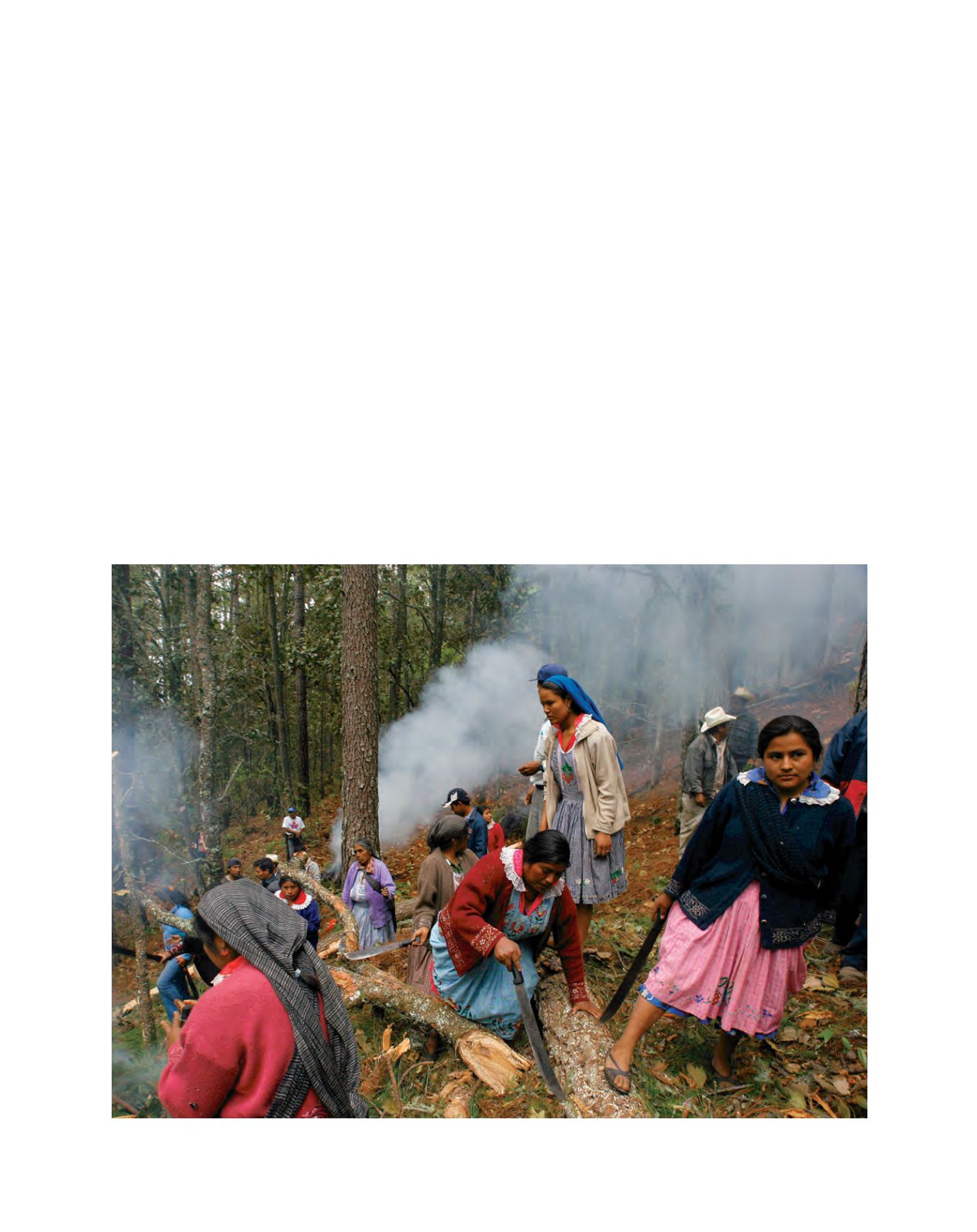

[
] 269
This favourable change towards stronger public policy
in forestry is accompanied by a historical increase in the
budget for the sector. In 2001, when Conafor was
established, the budget was 392.4 million pesos which,
by 2010, was 13 times higher at 5,252.9 million pesos.
Some of the priorities and results for the country’s
forest area, handled with ProArbol’s comprehensive
instrumentation, are described below:
Reduced loss of forestry surface
The Global Forest Resources Assessment 2010 report
conducted by the Food and Agriculture Organization of
the United Nations (FAO) indicates that Mexico is not
part of the group of countries with higher levels of defor-
estation and is currently one of the nations with massive
reforestation efforts and recovery of disturbed surfaces.
The update on the study, Dinámica de Cambio de
los Recursos Naturales (Dynamics of Change in the
Forest Resources), for the country during 2002-2007
by the National Forestry Commission with a projec-
tion to 2010, estimates that 2000-2005 saw an average
annual deforestation of 235,000 hectares of forest and
jungle, while 2005-2010 reported an annual average of
155,000 hectares.
and dwellers. Moreover, recognizing that ecosystems produce public
goods, their sustainable management and conservation is a respon-
sibility shared by all sectors of society, including industry, civil
organizations, academic and research institutions and social groups.
In recent decades all these groups have been incorporated in the
decision-making process through different agencies and consulta-
tion mechanisms within the sector.
In this context, the Ministry of Environment and Natural Resources,
through the National Forestry Commission (Conafor), has been a
strategic authority in the development and implementation of forest
policy, which is currently reflected in, for example, the sector’s support
programmes, conservation and high-productivity issues, cross-cutting
issues, training, technological development and international relations.
The National Forestry Commission, notably in the current
administration, has determined an integration strategy through
the ProArbol Program, whereby resources are provided to those
who implement forestry projects. Its design takes advantage of
the synergy between projects, which stimulates people to improve
their productive integration, and also enables the targeting of all
projects to take place where they represent the greater potential
for profit, in accordance with each of their objectives. At the same
time the ProArbol operational scheme ensures transparency in the
allocation of resources by the Government and the proper use by
the beneficiaries.
Indigenous women working in a forest of Oaxaca. The whole community participates in forest health activities
Image: CONAFOR
















